How to care for a pear in the fall: the correct preparation of the tree for winter
Winter Is Coming! It's time to devote some autumn time to your queen of the orchard.
Would you like to learn how to properly care for a pear in the fall?
Below you will find a quick guide to preparing your pear tree for a successful winter in the fall.
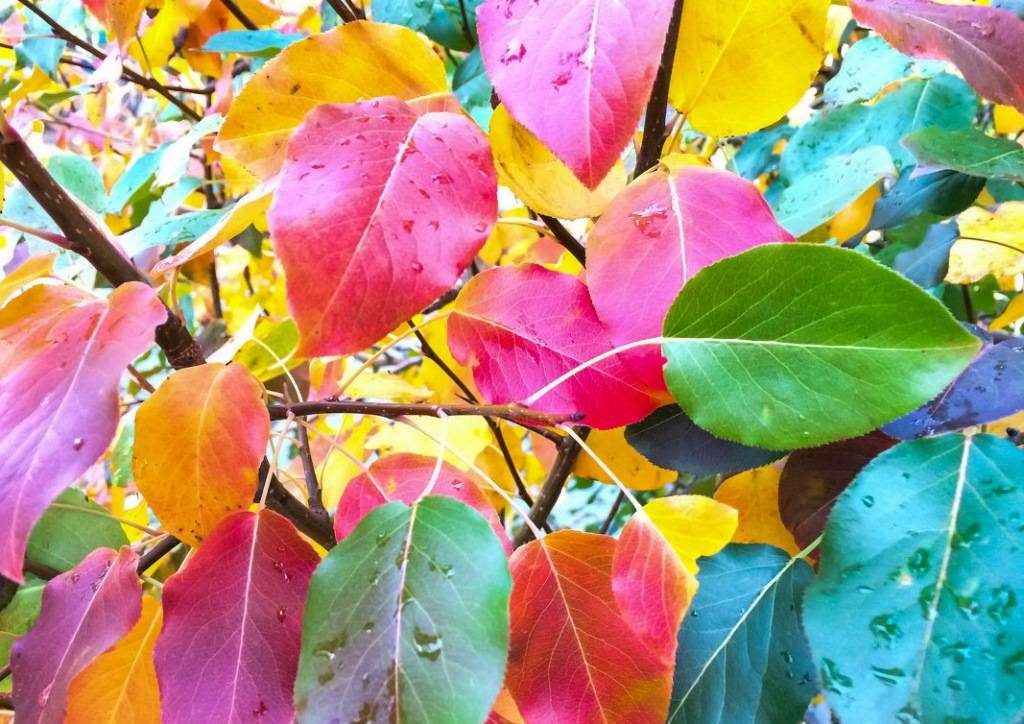
Content
- 1 How to care for a pear in the fall to get it ready for winter
- 2 When and how to fertilize pears after fruiting
- 3 Pruning pears in autumn
- 4 Eradicating autumn pear spraying from diseases and pests
- 5 How to whiten a pear in autumn
- 6 Autumn water-charging irrigation
- 7 The correct shelter of a pear for the winter
How to care for a pear in the fall to prepare for winter
So, here's what you need to do for a pear in the autumn, so that the plant overwinters well:
- to collect the harvest of fruits of late varieties and lay it for storage;
About, when to pick and how to store pears for a long time in winter read in this detailed article.

- perform autumn feeding;
Worth knowing! All fruit trees are fertilized in the fall in about the same way., so, for example, you can read with this material about autumn feeding of an apple tree (for a pear, everything is the same).
- carry out autumn pruning (only sanitary);
Important! It is recommended to prune all fruit trees in the spring, although in the fall, in principle, it is possible to prune stone fruit crops (pears and apple trees), but it is better to do this in the spring, so we suggest you read this article about how to shape and prune a pear in spring.
- if necessary and desired, clean the trunks from the old dead bark, mosses and lichens.
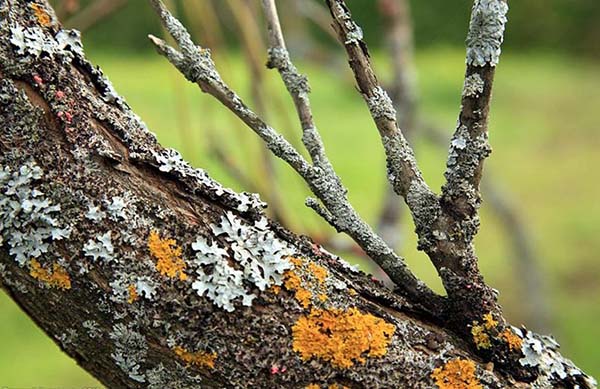
- clean the tree trunk from plant and other debris (you can before processing, and you can also after);
Important! If the tree did not hurt or only a little, then garbage (except for fallen fruits) can be thrown onto the compost heap. But if it hurt badly, then the plant residues must either be burned, or buried very deeply, or simply removed from the site.
- to carry out the eradicating autumn treatment from diseases and pests;
By the way! The site appeared a general article on when and how to eradicate diseases and pests from the garden in the fall.
- whitewash (required after processing).
Advice! All about autumn whitewashing fruit trees (including pears) described in detail in this material.
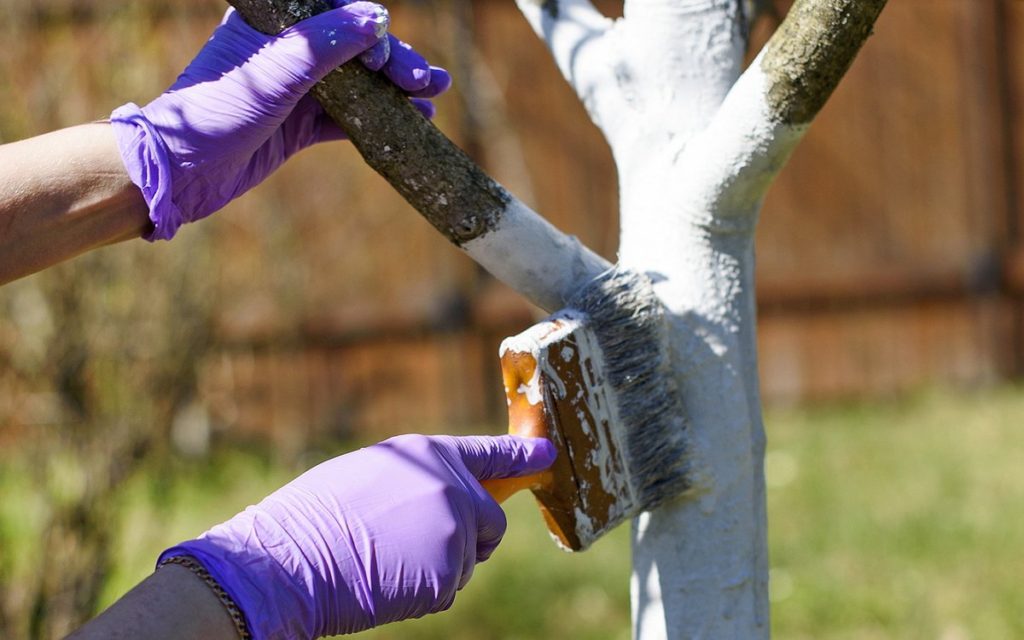
- make autumn water-charging watering and dig up the ground in the near-trunk circle;
- cover for the winter (more precisely, to protect a young tree from rodents and sunburn).
Now let's talk in more detail about each of the main autumn pear care activities.
When and how to fertilize pears after fruiting
After abundant fruiting, all fruit trees, including pears, so that successfully lay flower buds (= your future harvest), as well as strengthen before wintering, need replenishment.
To achieve these goals, you need to feed the pear. phosphoric-potassium fertilizers.
Note! In the autumn period, by no means should not be given to plants nitrogen fertilizers (urea or ammonium nitrate).
- Aspotash feeding can be used potassium sulfate (potassium sulfate).
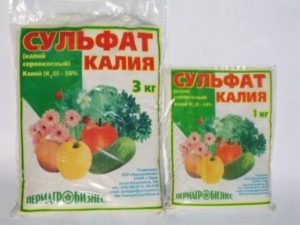
- As phosphoric - usual or double superphosphate .
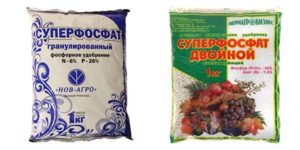
- Or you can use a complex mineral fertilizer, for example, potassium monophosphate (yes, it is expensive, but also more effective, because it acts instantly) or special "Autumn" (= phosphorus-potassium) fertilizers for the garden.
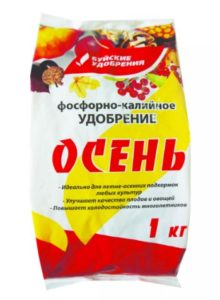
- If you prefer organic fertilizers, then your choice is wood ash (potassium) and bone flour (phosphorus).
Important! Usually, all fruit trees are fed about the same in the fall (pear is no exception), therefore, as an option, you can familiarize yourself with with this detailed material about the autumn feeding of apple trees.
Concerning way feeding, then since the root system of a pear (like any other fruit tree) lies deep enough, it is optimal to cook liquid solutions.
Rules for feeding pears in autumn:
- Before performing liquid fertilizing, the tree is spilled abundantly with plain water.
- You can either mix potassium sulfate and superphosphate in one bucket, or feed separately.
- Any top dressing should be applied around the crown circumference.
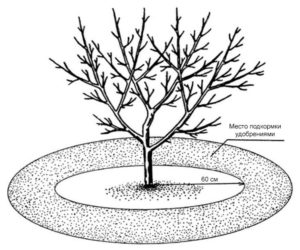
Top dressing for better ripening of shoots
If at the beginning of autumn you see that a young pear planted this spring or even more so in autumn, the shoots are still quite green (although in the fall it is necessary to acquire and plant seedlings only with ripe shoots), i.e. unripe and not lignified (and such shoots simply cannot endure frosts and will necessarily freeze out), then to accelerate their ripening (in winter they should go brown) it is imperative to carry out foliar top dressing (spray with a solution on the sheet) with phosphorus-potassium fertilizer (optimally - potassium monophosphate).
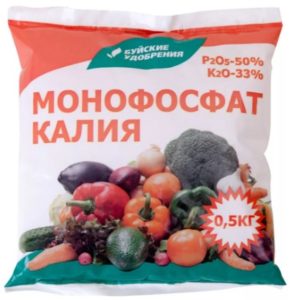
Pruning pears in autumn
Almost all experienced gardeners agree that fruit trees, including a pear, should be cut in the spring, and not in the fall.
Note! The fact is that autumn pruning is dangerous for fruit trees: the cuts do not have time to grow and prepare for low temperatures. As a result, in severe frosts in such places, the tree freezes out, because the sleeping tree does not build up bark and these wounds remain open until spring.
However, there is one fairly well-known, but not indisputable rule that in the fall you can cut pome trees (pears and apple trees), but stone fruit trees - only in the spring.
By the way! The site has a detailed article about how to shape and prune a pear in spring.
In any case, autumn pruning can be carried out only in the South of Russia, but not in the Middle zone (Moscow region), especially not in the Urals and Siberia.
But in general, in the fallusually spend only sanitary pruning of pears, i.e. get rid of dry, broken and diseased branches (especially affected moniliosis, which have a monilial burn).
Video: pruning pears in autumn for fruiting
Eradicating autumn pear spraying from diseases and pests
It would seem, why spray trees when they are already leaving for the winter, what's the point? And here's what: with this processing you can get rid of most of the remaining pathogenic fungi and insect pests (including their eggs) so that they could not overwinter on / in the bark and near-trunk circle (in the soil).
Advice! The site has a separate detailed article about when and how to properly carry out the autumn eradicating spraying of the garden from diseases and pests.
As for the timing of the autumn eradication spraying, there are 2 opinions on this score:
- treatment from pests and diseases is better done already after falling leaveswhen the tree is completely dormant, its buds will completely "close" and become inaccessible to the powerful and strong solutions with which we will spray the tree.
- on the contrary, it is better to have time to process the trees exactly before leaf fall (2-3 weeks before), i.e. more on the leaves (which have just begun to turn yellow), but be sure after fruiting and harvesting.
Warning! In this case, the leaves will quickly turn black and "burn", as it were. But you should not be afraid: this is what we achieved. Due to the loss of leaves, the tree will begin to prepare more actively for winter.
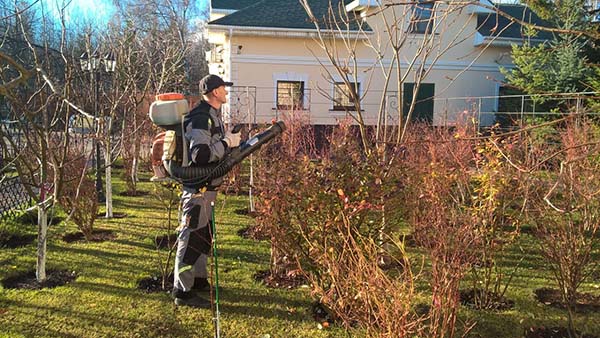
However, it is not worthwhile to delay too much with spraying in any case: it is important be in time before the onset of stable frosts, otherwise the preparations (fungicides and insecticides) will simply not work and the procedure will become meaningless (as a rule, most agents are effective at temperatures up to +5).
As for the funds, for the autumn processing of trees, they are most often used inkstone in combination with urea (optimal) either Bordeaux liquid (used much less frequently).
Advice! The site already has detailed material about when and how to treat fruit trees and shrubs in the fall from diseases and pests.
Video: autumn eradication spraying
By the way! If in the summer you noticed that the leaves and fruits on your trees have dried up, hang as if "burned", then just know: this monilial burn (moniliosis)which affects both pome and stone fruit trees.
Autumn processing also helps from the disease. bordeaux liquid or simply copper sulfate (but they are better off in spring).
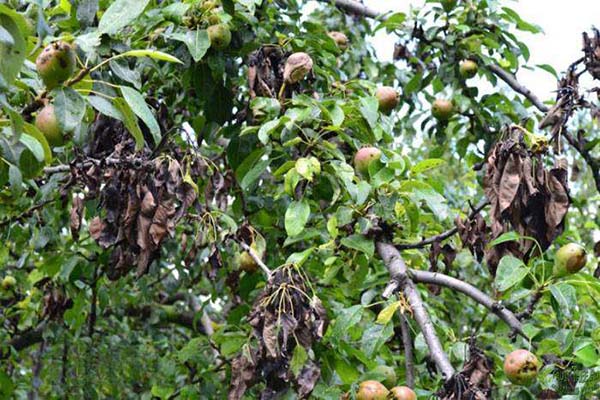
Note! If you carried out the autumn spraying of pears from diseases and pests, this does not mean that to spray in early spring you don't need it anymore. How much more necessary! Autumn eradication spraying actually similar to early spring garden processing (the very first, it is also called eradicating).
How to whiten a pear in autumn
The purpose of the autumn whitewashing of any fruit trees (including pears) is prevention of frostbites (sunburn), cracks on the bark, which are formed due to temperature changes (plus-minus, plus-minus) in the transitional winter-spring period (in February-March).
Note! Whitewashing in the spring (April-May) does not make any senseapart from the aesthetic.
It's another matter if you whitewash the trees in February or early March. But is it possible?
Accordingly, you need to whitewash old trees, and especially young ones. Moreover, for whitewashing the trunks of young seedlings, weaker solutions should be used (if you use lime, then its concentration should be reduced by 2 times) so as not to burn the young bark. Or you can use special paints for whitewashing garden trees: buy the same water-based or water-based paint, or acrylic paint. In any case, it is imperative to whitewash, since young seedlings have a very thin bark, which can be quite easily damaged in late winter and early spring from sunburn (it simply bursts due to temperature differences).
By the way! The site already has an article about when and how to whitewash fruit trees (including pears) in autumn.
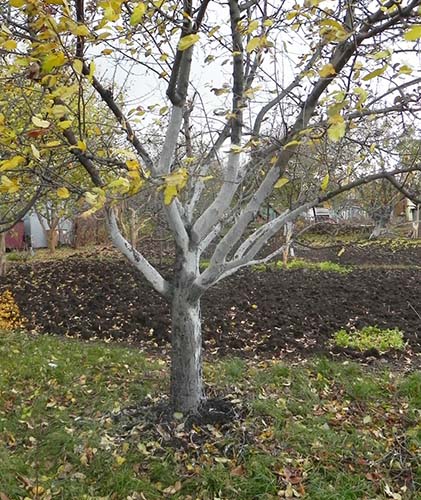
By the way! There is a not unfounded opinion that very young seedlings smooth bark it is better not to whiten, but to wrap the barrel with white covering material (for example, spunbond ribbons). So you not only prevent sunburn, but also protect the seedling from rodents (more in the next paragraph - about shelter for the winter).
Autumn water-charging irrigation
It is also called "water charging" irrigation or "winter" irrigation.
Autumn water-charging pear irrigation is another useful activity that allows you to better prepare the tree for winter by “filling” it with moisture.
The fact is that moist soil freezes less and has greater thermal conductivity, in other words, the heat from the lower layers of the soil will warm up the roots of your pear in the cold season.
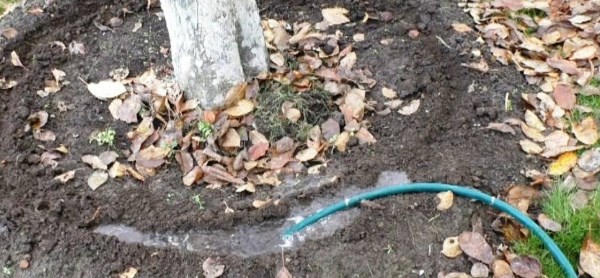
Thus, water charging is recommended for all fruit trees and berry bushes.
What is the time frame?
- With the beginning or after the fall of leaves, on the eve of cold weather (at a positive temperature).
When is winter watering especially necessary?
- In case you have sandy loam soil and autumn does not spoil with frequent and heavy rains, and winter is not snowy.
It is worth understanding! Of course, if autumn is very rainy, then you can completely do without water-charging irrigation.
How much water is required?
- Approximately 40-100 liters of water per 1 square meter of the trunk circle (for young - 40-50 liters, for adults - 80-100 liters), i.e. you need to calculate the area according to the crown projection (its perimeter). The more mature and massive your tree is, the more water you need: from about 50 to 200 liters.
Advice! Naturally, you don't need to carry any buckets: take the hose and move it around the trunk circle (and first measure how many minutes it takes to get one 10-liter bucket. For example, if in 30 seconds, 5-10 minutes will be enough).
And after watering (for example, the next day) it is very desirable also loosen the soil in the near-barrel circle, because loose earth freezes less.
Of course, if you have a good layer of sod under your pear or grass (lawn) just grows, then you do not need to touch it.
The correct shelter of a pear for the winter
Naturally, adult pears do not require any shelter for the winter: they are completely frost-hardy.
Another thing is young pear seedlings, which were planted this spring or even more so in the fall. They will need a certain shelter (more precisely, protection), but not from frost, but from rodents (mice and hares), as well as from sunburn (which was described in detail in the paragraph about autumn whitewashing).
So, in order to protect the pear from mice and hares, which so love to nibble young bark, you need wrap (more precisely, bandage) the lower part of the trunk (stem) from the ground itself to the skeletal branches special protective non-woven (i.e. breathable) material, for example spunbond or lutrasil, burlap (but by no means a film, otherwise your tree underneath it will shake out).
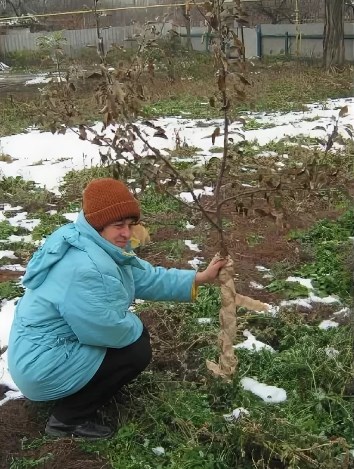
Important! If you wrap the barrel, then in this case you even no need to whitewash the treesincethe white non-woven fabric will have a protective function to prevent sunburn (i.e. will act as a sun reflector).
Although some gardeners, who constantly have problems with rodents and frost cracks, whitewash and wrap.
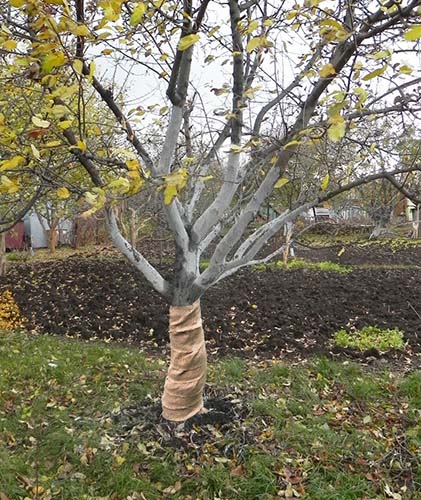
Also you can buy finished tape for wrapping trunks of fruit trees for the winter.
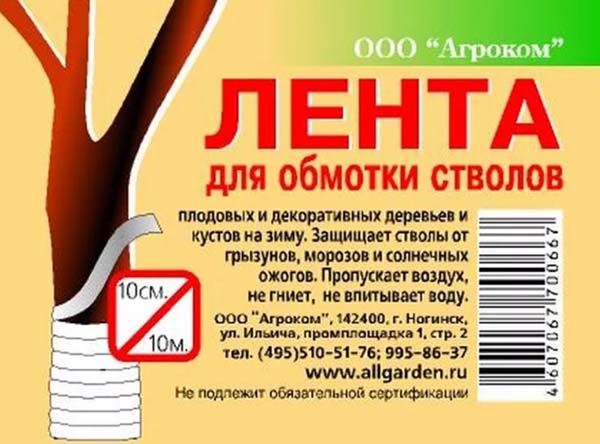
Some gardeners even put up such protective structures.

An amateur gardener from the next video proposes to protect the pear stem from rodents with the help of spruce branches, fixing it on the trunk with the help of old women's nylon tights (only that it was necessary to use white or gray tights, not black).
Video: preparing a pear seedling for wintering - protection from mice and hares
Advice! If you did not protect your young pears from rodents and mice or hares seriously damaged the bark, so to speak, gnawed with a ring, then in order to save the tree, you will need plant it in the spring with a bridge, which is described in detail in this article.
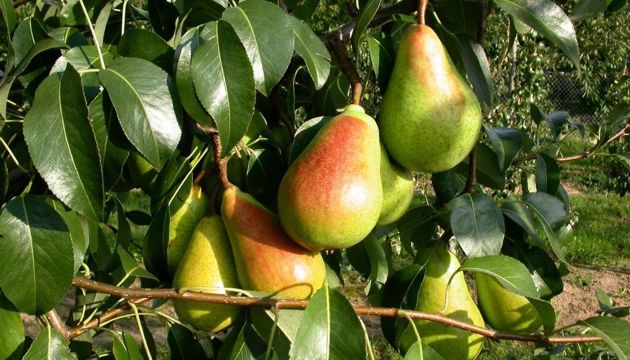
Well, now you know what kind of autumn care a pear needs in order for it to successfully endure the winter and again delight you with the harvest next year. There is nothing complicated in preparing a pear for winter: all operations are standard. Therefore, do not be lazy and complete at least the basic activities.
Video: how to properly prepare fruit trees for winter

